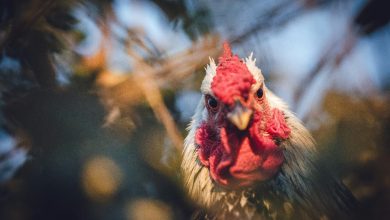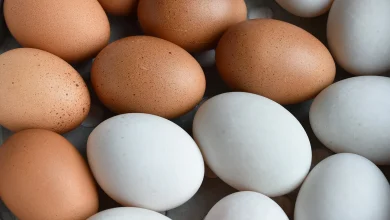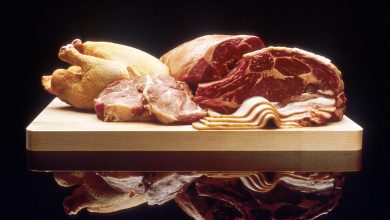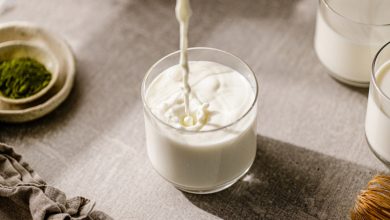DUCK MEAT AND ITS PROSPECTS
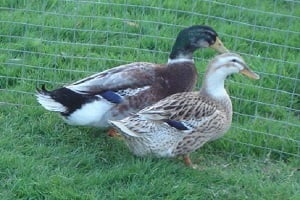
Suman Talukder 1, Vandita Mishra2
1 Scientist, 2 Ph.D.Scholar, Division of Livestock Products Technology, ICAR-IVRI, Izatnagar, Bareilly, UP
Introduction
The domestic rearing of ducks for food purpose can be traced back at historic times. In recent year duck farming has gradually grown and become a serious segment in poultry meat industry especially in Asia. The changing lifestyle, food consumption pattern, tastes preference of the consumer bringing the duck food in front line in their menu. With the increasing demand for poultry meat in this part of world, the duck industry has commenced to follow the same pattern of broiler industry. More specialized business venture are been established along with the marketing use of modern production facilities as well as up-to-date processing plants and products marketing strategies.
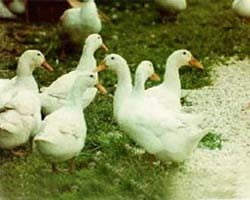
Meat-type breeds of duck
Muscovy: The Muscovy breed is easily identified by its red knobby nodules along the eyes and above the base of the bill, it is the leaner variety and the meat is darker. Muscovy is a heavy breed.
Pekin: The Pekin breed is native to China. Pekin ducklings are ready for market at age two to three months. The white Peking duck, often sold under the name Long Island duckling, are the ones most often available in supermarkets today. This breed is the most demanded for its quality meat, tremendous taste and flavor.
Broiler or fryer: These ducks are young (under 8 weeks) and tender, roaster duckling (under 16 weeks) is starting to harden, and mature duck has tougher flesh.
Composition of duck meat:
Duck muscles are predominantly dark muscle throughout the carcass. The moisture content of duck meat is around 73-76% (Omojola, 2007). The protein content of duck breasts and legs are 20.8 and 19.6%, respectively (Cobos et al., 2000). The ranges of essential amino acid percentages present in duck meats: 6.01-8.08% of phenylalanine and tyrosine, 3.21-6.14% of isoleucine, 7.67-8.45% of leucine, 8.60-9.57% of lysine, 3.11-3.26% of methionine and cysteine, 4.11-5.22% of threonine, 0.70-1.25% of tryptophan and 3.67-7.01% of valine (Woloszyn et al., 2006).
The percentage of fat in duck meat is relatively higher than other common poultry meats. Fat alteration over storage time will affect the physicochemical and sensory properties (Russell et al., 2004) in the form of raw meat or processed products. It contains 5.95% lipid without the skin and 39.34% with skin. Muscle alone contains 50.3% saturated, 33.4% monounsaturated and 16.3% polyunsaturated fatty acids, whereas duck with skin contains 35.7% saturates; 50.5% monounsaturates and 13.7% polyunsaturates, as with chicken and turkey the addition of the skin increases the proportion of monounsaturated fatty acids in the lipid from duck. The major fatty acids in duck fat are similar to those in chicken and turkey except for the absence of long chain PUFA’s and a higher proportion of linoleic acid. Duck fat contains 35.7% saturates, 50.5% monounsaturates (high in linoleic acid) and 13.7% polyunsaturated fats (Which contains Omega-6 and Omega-3 essential oils). The main difference between chicken, turkey and duck is that duck contains more linoleic acid, which chicken and turkey contain a higher amount of polyunsaturated fats. It appears that duck fat is more like olive oil than it is like butter or beef.
Type of duck meat
Duck meat can be categorized into two types.
Whole duck and the cutting part including breast meat, fillet, bone-in-leg, thigh meat, drum stick, three joint wing, wing stick, middle wing, two joint wing, wing tip and others e.g. tongue, beak and feet.
Purchasing and Storage Tips of duck meat
• Fresh duck should be odor-free and have clean skin with no pinfeathers.
• Frozen duck should have a plump breast and wrapped in an airtight package.
• The meat should be stored in the coldest part of the refrigerator and frozen duck can be stored in the freezer for three months.
• Duck liver/foiegras, is highly perishable and will only keep for 3 to 4 days in the refrigerator once the package has been opened.
Characteristics feature of duck meat:
The dressing percentage of duck is around 65-71% (Omojola, 2007)and it varies with the age and sex of the bird. Some important characters of duck meat are,
Color of Duck Meat:
Duck meat is considered as “white” meat, even though its meat is considerably darker than other poultry meats such as chicken or turkey. The reason for this is ducks are more active in comparison to chicken therefore they need and use up more oxygen. The extra oxygen in the body of the duck or other types of game bird, gives their meat the darker red color due the higher content of muscle myoglobin.
Aroma of duck meat: The aroma of duck meat is relatively stronger than other poultry meats. It has been found that the flavor of meat is positively correlated with lipid content (Chartrin et al., 2006b) and the higher fat content of duck meat may cause the stronger flavor.
pH of duck meat: The pH range of duck meat is 5.4 to 6.3 (Erisir et al., 2009) in most of the cases. The pH of duck meat, however, is related to its glycogen content. A higher glycogen contents result in lower pH levels.
Processed duck products
Among the popular duck meat cuisine, Roasted duck , Roasted magret (breast filets of duck), Pan-fried Duck, Braised Duck, Pan-fried duck liver (Foie gras), Barbecued Grilled Duck, Grilled Duck Kebabs etc. are well known. Other than those some regional variation are, Peking roasted duck, Nanjing cooked duck, Zhangcha duck (China), Canard α l’Orange (France), Oritang (Korea) and gulai itiak lado mudo (Indonesia). The only traditional applications of duck meat cannot stimulate the rapid growth and popularity development of duck meat applications in this decade. Therefore the export graded duck meat products yet to be developed and fabricated.
Future approaches
Low demand for duck meat positively correlates with the low consumption of duck meat. The low level of consumption of duck meat is governed by many factors in comparison to chicken meat, reflected in low levels of duck meat acceptance and preference by society, the reason behind this constraints are, the unavailability of the meat quality ducks breeds, lower production level, difficulties in the slaughtering, lack of demand for ducks and weakness of market system for selling duck meat products (Oteku et al.,2006). The holistic approach towards the development of healthy, safe and nutritionally enriched duck meat can remove stigma adhere with the duck meat. The efforts to solve these problems focus should be on the researchers and government to popularize the duck meat as a food choice and to undertake necessary policy. A persuasive approach and good policies from the government will hopefully attract the society to use duck meat in greater quantities.
References:
1. Chartrin, P., M.D. Bernadet, G. Guy, J. Mourot and J.F. Hocquette, 2006. Does overfeeding enhance genotype effects on energy metabolism and lipid deposition in breast muscle of ducks? Comp. Biochem. Physiol. Part A: Mol. Integrative Physiol. 145: 413-418.
2. Cobos, A., A. Veiga and O. Diaz, 2000. Chemical and fatty acid composition of meat and liver of wild ducks (Anas platyhynchos). Food Chem. 68: 77-79.
3. Erisir, Z., O. Poyraz, E.E. Onbasilar, E. Erdem and G.A. Oksuztepe, 2009. Effects of housing system, swimming pool and slaughter age on duck performance, carcass and meat characteristics. J. Anim. Vet. Adv. 8: 1864-1869.
4. FAO, 2017.FAOSTAT.Food and Agriculture Organisation of the United Nation, Roam , Italy.
5. Interesting new topics of times demand\Duck meat\Health benefits of Duck Fat.htm.
6. Omojola, A.B. 2007. Carcass and organoleptic characteristics of duck meat as Influenced by breed and sex. International Journal of Poultry Science 6 (5): 329-334.
7. Oteku, I.T., J.O. Igene and I.M. Yessuf, 2006. An assessment of the factors influencing the consumption of duck meat in Southern Nigeria. Pak. J. Nutr. 5: 474-477.
8. Russell, E.A., P.B. Lynch, K. O. Sullivan and J.P. Kerry. 2004. Dietary supplementation of a-tocopheryl acetate on a-tocopherol levels in duck tissues and its influence on meat storage stability. Int. J. Food Sci. Technol. 39: 331-340.
9. USDA, 2006. Duck and goose from farm to table. US. United States Department of Agriculture Food Safety and Inspection Service. http://www.fsis.usda.gov/factsheets/Duck_&_Goose_from_Farm_to_Table/index.asp.
10. Woloszyn, J., J. Ksiazkiewicz, T. Skrabka-Blotnicka, G. Haraf, J. Biernat and T.Kisiel, 2006. Comparison of amino acid and fatty acid composition of duck breast muscles from five flocks. Arch. Tierz. Dummerstorf, 49: 194-204.

